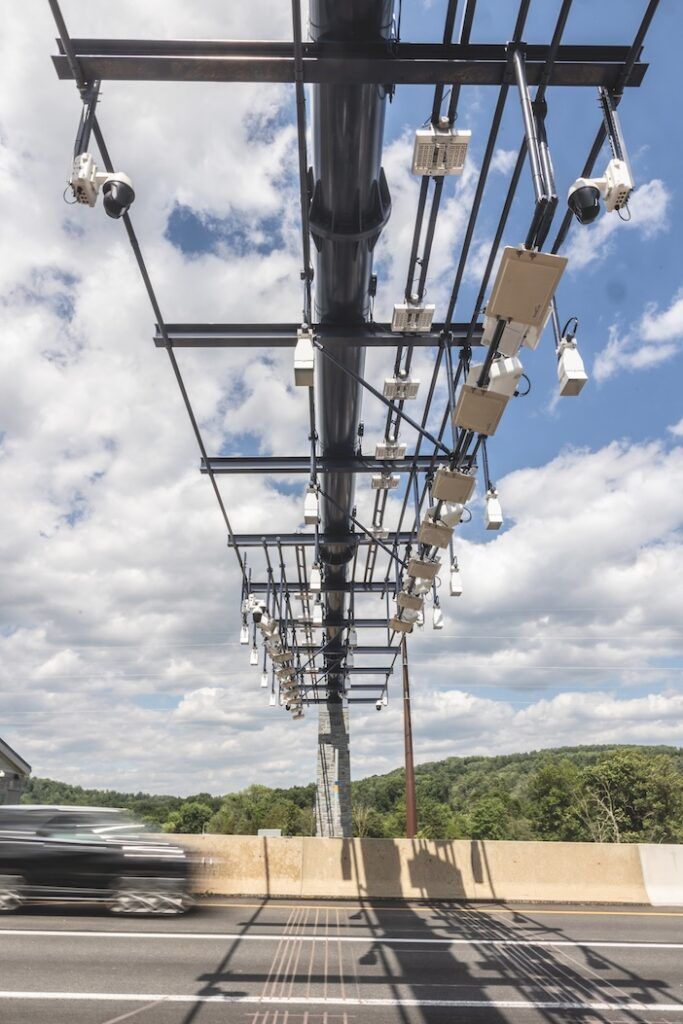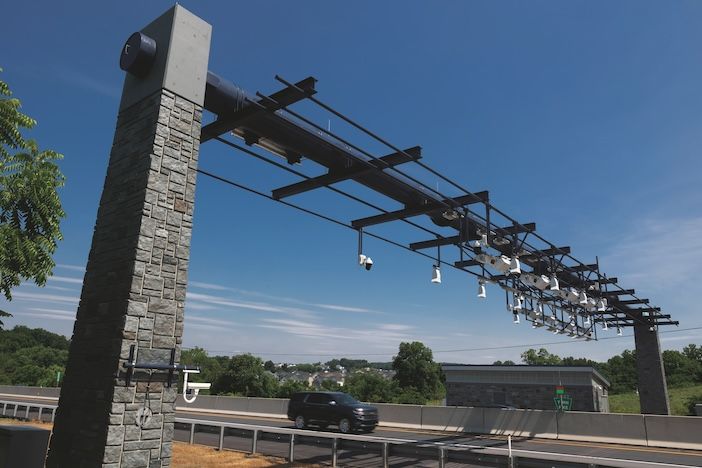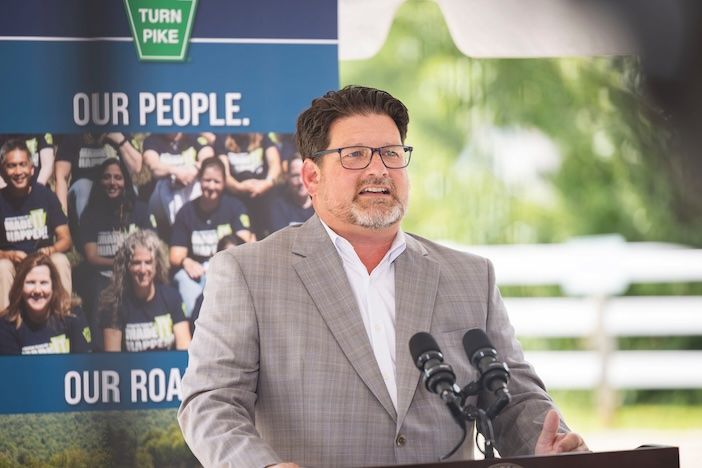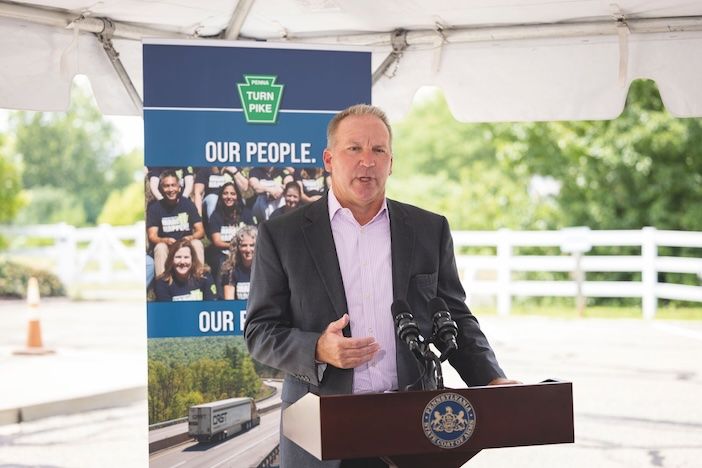When it comes to deploying tolling technology, few roads in the world have more experience than America’s ‘first superhighway’ the Pennsylvania Turnpike. Lloyd Fuller takes a look at how it continues to lead the industry with its new open road tolling scheme, set to go live next year
With the free-flow tolling market predicted to double in size in the next 10 years, from an estimated worth of around US$10bn in 2023 to more than $20bn in 2033, every new deployment of open road tolling (ORT) technology is worthy of careful study, and Pennsylvania Turnpike’s new project is certainly no exception.
The Pennsylvania Turnpike was the first modern, multi-lane highway in the USA and was acclaimed as an engineering marvel when it opened in 1940. Unlike previous, slower roads it cut across mountains and valleys and bypassed towns, with no signals, stop signs or intersections to slow drivers down (see page 26 for more on its history).
However, there has always been one bottleneck for the turnpike and others like it around the world – toll plazas. Even in recent years with the advent of all-electronic tolling, plazas have remained where drivers had to slow for transponders to be read or a handful of cash or card payments to be collected. But in Pennsylvania that is all now to change, as 1940’s vision of completely free-flow travel comes to its full realization.
“When we opened as America’s first superhighway, we set the national standards for interstate highway design and engineering,” says Brad Heigel, chief engineer for the PA Turnpike Commission. “Open road tolling continues that legacy.”
“About 30% of the fiber goes to our needs. But our goal is to utilize the remaining 70% to make us a better neighbor, linking communities that need it, in the name of economic development”
Mark Compton, CEO, PA Turnpike Commission
The turnpike’s new ORT deployment, set to go live in January 2025, is the culmination of 15 years of planning and testing, and promises to enhance traffic flow and open up new possibilities for economic development along the turnpike corridor.
The technology will initially cover the turnpike east of Reading and the Northeast Extension, with the western portion of the system scheduled for conversion in 2027. “We have constructed gantries from Reading to the east,” says Heigel. “Those structures are equipped with technology that will do a couple different things. Firstly, they will take a picture of license plates for toll-by-plate customers, or they will read the transponders of E-ZPass customer. And they will also classify each customer based on their profile.”
“We’re moving to a standard seven-cent-per-mile toll for passenger vehicles”
Craig Shuey, COO, PA Turnpike Commission
Tolls will be collected electronically as vehicles pass under overhead gantries at highway speeds, eliminating the need for traditional plazas. The 19 new gantries will levy charges based on the exact number of miles traveled, with a greater level of accuracy than on/off toll plazas, making it more akin to nascent distance-based road user charging.
For passenger vehicles, the commission is introducing a simplified pricing structure. “We’re moving to a standard seven-cent-per-mile toll for passenger vehicles,” says Craig Shuey, chief operating officer of the PA Turnpike Commission.
Greater precision
Pat Jones, outgoing CEO of the IBTTA points to the fact new systems such as the one on PA Turnpike also allow changes to tolls to be applied in a fair and incremental way that was not easy with legacy systems: “Electronic toll collection allows you to be precise,” says Jones. “It also allows you to increase a toll over time with, for example the consumer price index. Let’s say your tolling point is $1 and the CPI over the last year was 3% You don’t have to increase the toll by a round number, like 10 cents, you could say it’s going to be $1.03 now.”
For most customers, the transition to ORT will be seamless. E-ZPass users, who currently make up about 80% of turnpike customers, will continue to use their transponders as before. Toll-by-plate customers will receive invoices in the mail as usual however the format will change slightly.
“We will no longer be a trip-based invoice system,” says Shuey. “A journey from Harrisburg East to Valley Forge will look different after January 2025 as each gantry location will be shown on the invoice.”
“When we opened as America’s first superhighway, we set the national standards for interstate highway design and engineering. Open road tolling continues that legacy”
Brad Heigel, chief engineer, PA Turnpike Commission
The commission is encouraging its customers to ensure accounts are up to date and tags properly installed on windshields so the switchover can happen seamlessly.
The transition to ORT will also bring changes to the vehicle classification system. The PA Turnpike Commission will move away from its current weight-based classification system to a new system based on vehicle height and number of axles.
“Pennsylvania Turnpike is the last agency in the nation using weight as the basis for tolling and it has served us well,” says Shuey. “But those scales will not be able to be moved to the mainline, they’re too expensive, too heavy on maintenance, and simply won’t work in the environment that we’re going to put open road tolling in.”
The new system will feature 11 vehicle classifications, up from the current nine. This change aims to more fairly differentiate between various vehicle types. For example, Shuey notes that it’s important to “treat a recreational or SUV trailering a boat differently from a tractor-trailer hauling 80,000 pounds.”
Planned benefits
Initial feasibility studies for ORT began in 2010, with the Delaware River Bridge serving as the first pilot project in 2016. This pilot allowed the commission to test not only the technology but also the business rules and ensure that both toll-by-plate and E-ZPass systems would function effectively.

Pilots also assessed potential benefits with a primary advantage being improved safety. “For generations folks have driven through our interchanges having to come to a stop or slow down as they navigated the interchanges, deciding which way to go as they roll through the turnpike system,” says Shuey. “There’s obviously a whole area of confusion that comes around moving through those toll facilities, and open road tolling will help us eliminate those.”
The new system is expected to reduce congestion and improve traffic flow. “Congestion is also a big issue,” says Shuey. “We will now be able to move traffic freely through areas, with traffic not having to come to stops so we don’t create situations where idling occurs at these interchanges. This is a big part of this project and one that I think the motoring public will appreciate.”
Environmental benefits of ORT are also well understood. Pennsylvania Turnpike’s CEO Mark Compton calls on data from previous projects and pilots, to point out that: “When we flip the switch to all electronic tolling, no stoppage at interchanges means a 45% reduction in CO2.”
Ahead of PA Turnpike’s new open road tolling system coming online in January 2025, the commission has already begun the process of revitalizing its interchanges. “We have demolition contracts being bid later this calendar year into early 2025,” says Heigel. “There will be a lot of construction work as we remove the toll plazas and make it more optimal for our customers to be able to move through our interchanges.”
“The advent of open road tolling will advance safety and allow for the safe movement of vehicle traffic across our network,” says PennDOT Secretary and PA Turnpike Chairman Michael Carroll. “Pennsylvania is the great American getaway and open road tolling will get traveling members of the public to destinations across our great commonwealth in a safe and efficient manner.”
From improved safety and reduced emissions to new economic opportunities and enhanced connectivity, the implementation of ORT promises to usher in a new era for Pennsylvania’s transportation infrastructure.
You can read the full version of this article and listen to AI audio narration in the TTi September 2024 digital edition








